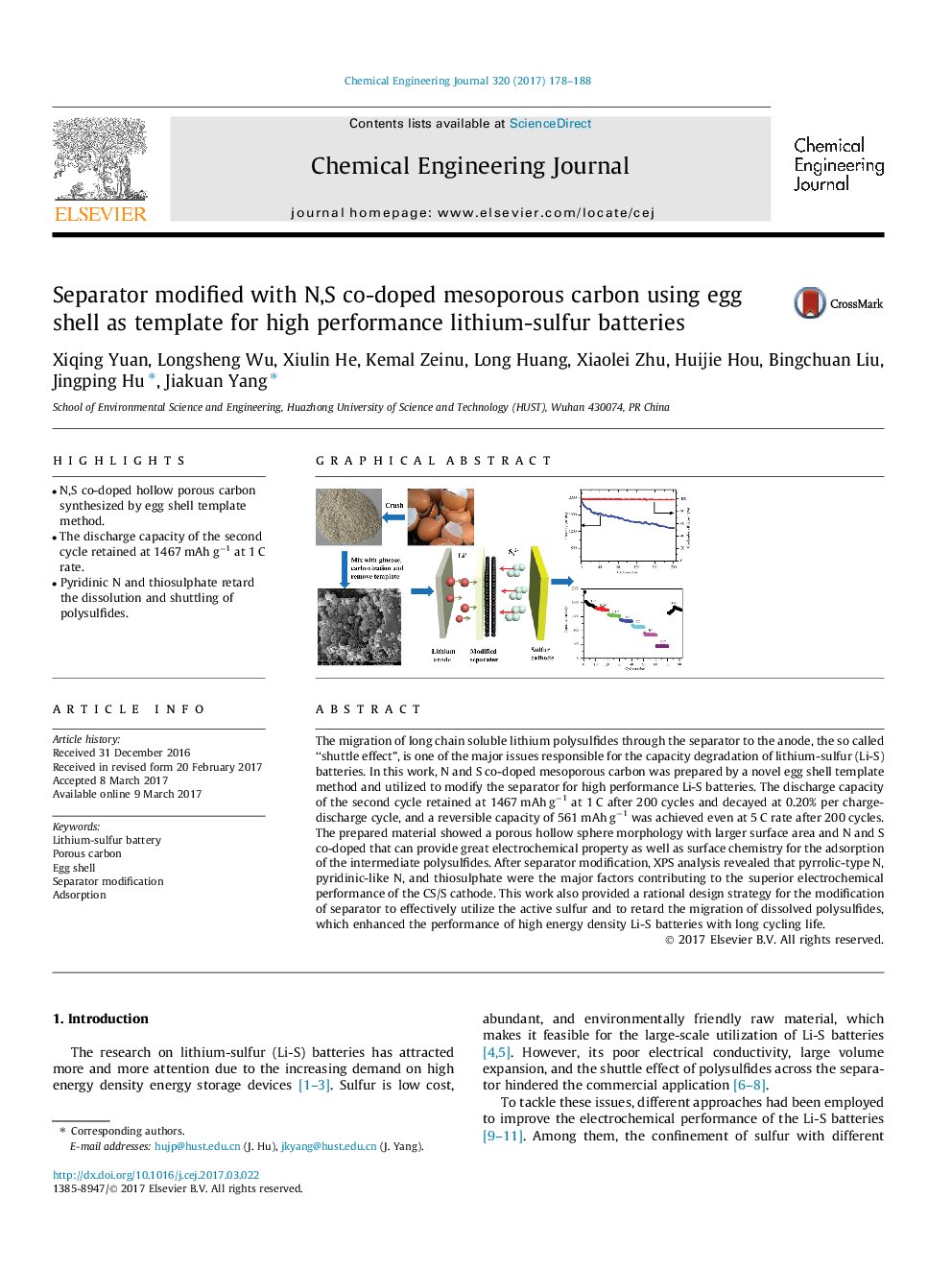| Article ID | Journal | Published Year | Pages | File Type |
|---|---|---|---|---|
| 6466020 | Chemical Engineering Journal | 2017 | 11 Pages |
â¢N,S co-doped hollow porous carbon synthesized by egg shell template method.â¢The discharge capacity of the second cycle retained at 1467 mAh gâ1 at 1 C rate.â¢Pyridinic N and thiosulphate retard the dissolution and shuttling of polysulfides.
The migration of long chain soluble lithium polysulfides through the separator to the anode, the so called “shuttle effect”, is one of the major issues responsible for the capacity degradation of lithium-sulfur (Li-S) batteries. In this work, N and S co-doped mesoporous carbon was prepared by a novel egg shell template method and utilized to modify the separator for high performance Li-S batteries. The discharge capacity of the second cycle retained at 1467 mAh gâ1 at 1 C after 200 cycles and decayed at 0.20% per charge-discharge cycle, and a reversible capacity of 561 mAh gâ1 was achieved even at 5 C rate after 200 cycles. The prepared material showed a porous hollow sphere morphology with larger surface area and N and S co-doped that can provide great electrochemical property as well as surface chemistry for the adsorption of the intermediate polysulfides. After separator modification, XPS analysis revealed that pyrrolic-type N, pyridinic-like N, and thiosulphate were the major factors contributing to the superior electrochemical performance of the CS/S cathode. This work also provided a rational design strategy for the modification of separator to effectively utilize the active sulfur and to retard the migration of dissolved polysulfides, which enhanced the performance of high energy density Li-S batteries with long cycling life.
Graphical abstractDownload high-res image (218KB)Download full-size image
